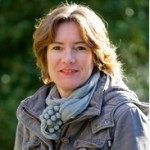Link to Pubmed [PMID] – 30796326
Sci Rep 2019 Feb;9(1):2563
Genomic variations in Candida albicans, a major fungal pathogen of humans, have been observed upon exposure of this yeast to different stresses and experimental infections, possibly contributing to subsequent adaptation to these stress conditions. Yet, little is known about the extent of genomic diversity that is associated with commensalism, the predominant lifestyle of C. albicans in humans. In this study, we investigated the genetic diversity of C. albicans oral isolates recovered from healthy individuals, using multilocus sequencing typing (MLST) and whole genome sequencing. While MLST revealed occasional differences between isolates collected from a single individual, genome sequencing showed that they differed by numerous single nucleotide polymorphisms, mostly resulting from short-range loss-of-heterozygosity events. These differences were shown to have occurred upon human carriage of C. albicans rather than subsequent in vitro manipulation of the isolates. Thus, C. albicans intra-sample diversity appears common in healthy individuals, higher than that observed using MLST. We propose that diversifying lineages coexist in a single human individual, and this diversity can enable rapid adaptation under stress exposure. These results are crucial for the interpretation of longitudinal studies evaluating the evolution of the C. albicans genome.





